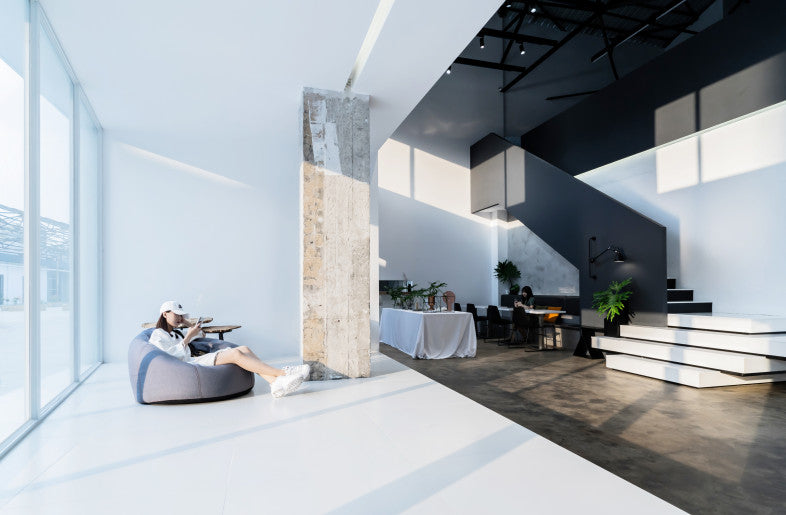Welcome to a deep dive into the fascinating world of interior design psychology, where every choice we make as designers has the power to influence the way people feel and behave in a space. In this comprehensive exploration, we'll delve into the intricate interplay between design elements and human psychology, uncovering the secrets to creating environments that not only look beautiful but also nurture well-being and functionality.
Understanding the Psychology of Design: Interior design is more than just arranging furniture and picking out paint colors; it's about orchestrating experiences. By harnessing the principles of psychology, we can create spaces that resonate with occupants on a profound level. Whether it's the use of color, lighting, texture, or layout, each design decision has the potential to evoke specific emotions and behaviors within a room.
Color Psychology in Design: Let's start by examining the profound impact of color on our emotions and perceptions. Colors have the power to evoke a wide range of feelings, from calm and serene to energetic and vibrant. For example, warm tones like reds and oranges can stimulate appetite and conversation, making them ideal for dining areas or kitchens. Meanwhile, cool tones like blues and greens promote relaxation and tranquility, perfect for bedrooms or meditation spaces. By understanding the psychological effects of color, we can create environments that support the activities and moods desired by our clients.
Lighting and Mood Enhancement: Lighting is a crucial element of interior design, capable of transforming the mood and ambiance of a space with a flick of a switch. Natural light, in particular, has been shown to have numerous health benefits, including improved mood, productivity, and overall well-being. Integrating ample windows, skylights, and light wells into our designs allows us to harness the healing power of sunlight while reducing reliance on artificial lighting. Additionally, incorporating layered lighting schemes, including ambient, task, and accent lighting, provides flexibility and control over the atmosphere of a room throughout the day and night.
Texture and Tactile Experience: Texture adds depth and dimension to interior spaces, engaging the senses and enhancing the overall sensory experience. From soft, tactile fabrics to smooth, sleek surfaces, the juxtaposition of textures creates visual interest and invites exploration. Consider incorporating a variety of textures into your designs, such as plush rugs, velvet upholstery, or rough-hewn wood accents, to stimulate the senses and create a multi-sensory experience for occupants.
Layout and Flow: The layout of a space significantly impacts how people navigate and interact within it. A well-designed layout facilitates efficient movement and encourages social interaction, while a poorly planned one can feel cramped and chaotic. When designing a space, consider the flow of traffic and ensure that key areas, such as seating arrangements and focal points, are easily accessible and visually appealing. Thoughtful space planning maximizes functionality while maintaining a sense of harmony and balance throughout the room.
Incorporating Area Rugs and Flooring: Area rugs and flooring play a crucial role in tying a room together and anchoring the overall design aesthetic. When selecting area rugs, consider not only their visual appeal but also their practicality and comfort. Plush rugs in living areas add warmth and softness underfoot, while durable, easy-to-clean options are ideal for high-traffic areas like entryways and kitchens. Similarly, flooring materials such as hardwood, tile, or carpeting can significantly impact the look and feel of a space, so choose wisely based on the desired atmosphere and practical considerations.
Case Studies and Real-Life Examples: Now, let's explore some real-life examples of successful interior design projects that exemplify the principles discussed above. From residential retreats to commercial spaces, each case study demonstrates how thoughtful design choices can create memorable experiences for occupants and visitors alike.
Residential Retreat: The Tranquil Oasis Located amidst the hustle and bustle of urban life, this serene residential retreat offers a sanctuary from the stresses of daily life. Drawing inspiration from nature, the design palette features soft, earthy tones and natural materials, evoking a sense of calm and tranquility. Floor-to-ceiling windows flood the space with natural light, while strategically placed lighting fixtures create a warm and inviting ambiance. Plush area rugs and cozy throws add warmth and texture, inviting residents to relax and unwind. The layout is open and airy, with fluid transitions between living spaces, encouraging social interaction and connection. This residential oasis demonstrates how thoughtful design choices can create a harmonious balance between beauty and functionality, providing residents with a haven of peace and serenity in the heart of the city.
Commercial Space: The Collaborative Hub In this dynamic co-working space, design plays a central role in fostering creativity, collaboration, and productivity. Bold pops of color inject energy and personality into the space, while flexible layout options accommodate various work styles and preferences. Floor-to-ceiling windows flood the space with natural light, creating a bright and invigorating atmosphere conducive to focus and concentration. Sleek, modern furnishings and streamlined finishes convey a sense of professionalism and sophistication, inspiring confidence and creativity in occupants. Comfortable seating areas and communal gathering spaces encourage spontaneous interactions and idea-sharing, fostering a sense of community and camaraderie among coworkers. This collaborative hub demonstrates how strategic design choices can enhance the functionality and atmosphere of a commercial space, driving innovation and success for its occupants.
In conclusion, the psychology of space offers invaluable insights for interior designers seeking to create environments that enrich the lives of occupants. By understanding how design influences emotions and behaviors, we can craft spaces that support well-being, foster creativity, and promote connectivity. From color psychology to lighting design and layout considerations, every aspect of interior design plays a crucial role in shaping the human experience. By incorporating these principles into our work and staying attuned to the needs and preferences of our clients, we can continue to elevate the art and science of interior design, one space at a time.

